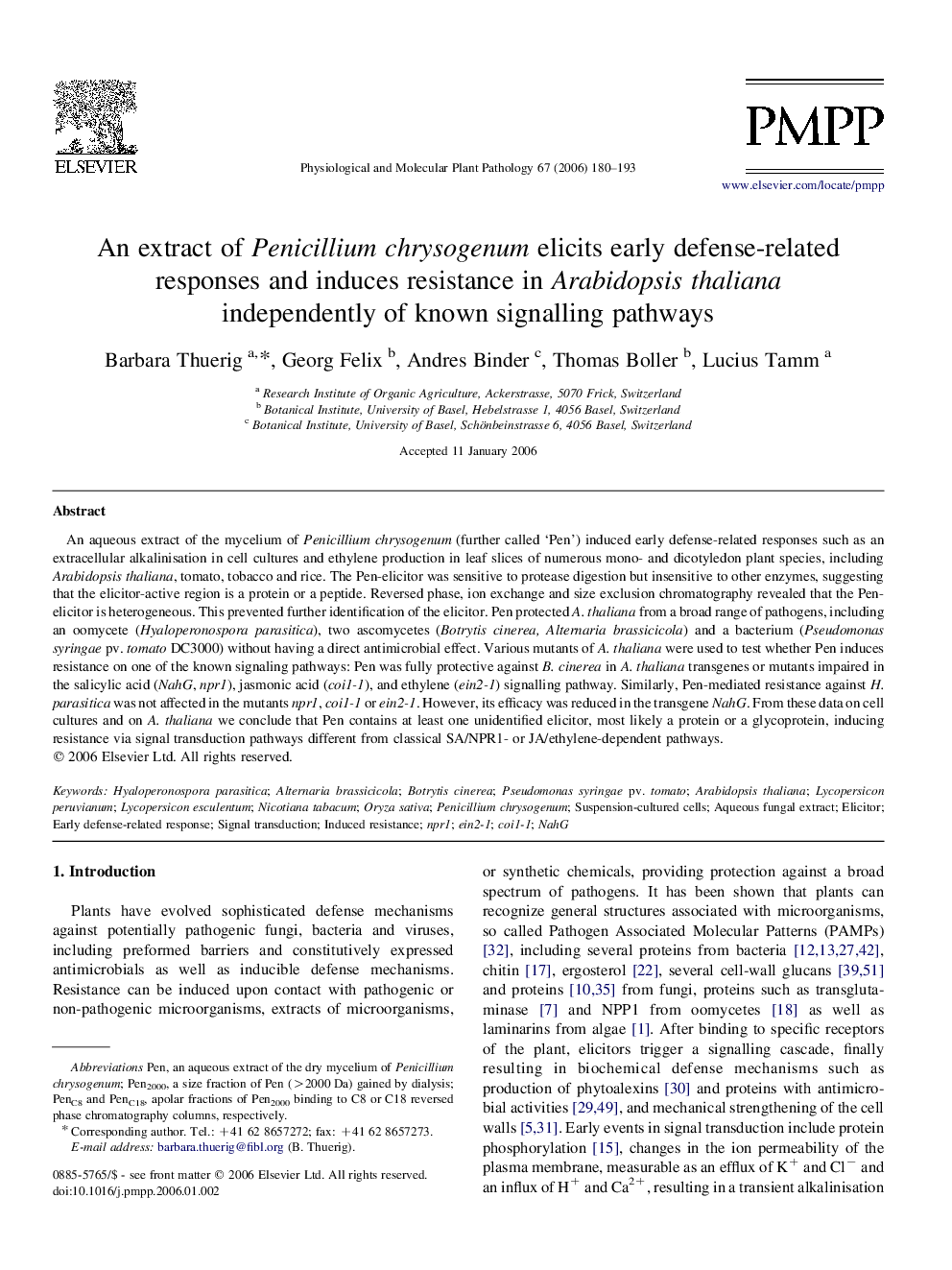| Article ID | Journal | Published Year | Pages | File Type |
|---|---|---|---|---|
| 2836841 | Physiological and Molecular Plant Pathology | 2006 | 14 Pages |
An aqueous extract of the mycelium of Penicillium chrysogenum (further called ‘Pen’) induced early defense-related responses such as an extracellular alkalinisation in cell cultures and ethylene production in leaf slices of numerous mono- and dicotyledon plant species, including Arabidopsis thaliana, tomato, tobacco and rice. The Pen-elicitor was sensitive to protease digestion but insensitive to other enzymes, suggesting that the elicitor-active region is a protein or a peptide. Reversed phase, ion exchange and size exclusion chromatography revealed that the Pen-elicitor is heterogeneous. This prevented further identification of the elicitor. Pen protected A. thaliana from a broad range of pathogens, including an oomycete (Hyaloperonospora parasitica), two ascomycetes (Botrytis cinerea, Alternaria brassicicola) and a bacterium (Pseudomonas syringae pv. tomato DC3000) without having a direct antimicrobial effect. Various mutants of A. thaliana were used to test whether Pen induces resistance on one of the known signaling pathways: Pen was fully protective against B. cinerea in A. thaliana transgenes or mutants impaired in the salicylic acid (NahG, npr1), jasmonic acid (coi1-1), and ethylene (ein2-1) signalling pathway. Similarly, Pen-mediated resistance against H. parasitica was not affected in the mutants npr1, coi1-1 or ein2-1. However, its efficacy was reduced in the transgene NahG. From these data on cell cultures and on A. thaliana we conclude that Pen contains at least one unidentified elicitor, most likely a protein or a glycoprotein, inducing resistance via signal transduction pathways different from classical SA/NPR1- or JA/ethylene-dependent pathways.
